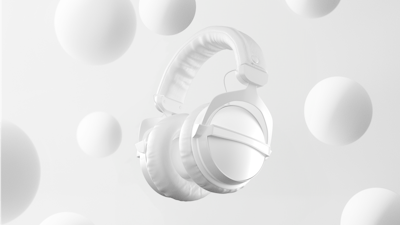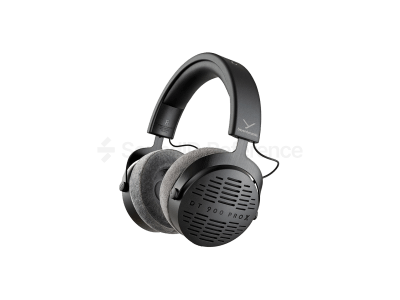Looks like AudioTechnica is going after the venerable Sennheiser HD25-II (or any of its dozen variants) with the ATH-M60x. Once you pick these up, it’s obvious that we’re not talking about an ATH-M50x +10 or ATH-M70x with 10 taken off. The newest M-series headphone from the Japanese company is more mobility-oriented with a smaller size and an over-ear design. Read on to find out what has been sacrificed to make the M50x mobile and whether the ATH-M60x is something that can help you.
- Well-built
- Light weight
- Very low THD lets a lot of detail through
Pros list with SoundID Reference calibration
- The neutral sound together with low THD makes the ATH-M60x a compelling package for a wide array of applications
- Coloured mids
- Can't be taken apart without tools
- Isolation could’ve been better
The ATH-M60x is around 5 dB more sensitive than other M-series headphones from Audio-Technica. The 38 Ohm load impedance of the headphone also suggests that the M60x is designed to be run from portable devices, which usually don’t excel in dealing with high impedance loads. One should take care to not power the ATH-M60x from high output impedance headphone jack as that would alter the tonal response; anything under 5 Ohms should be fine.
Audio-Technica must be commended here as the ATH-M60x shows a palpable increase in build quality over the M50x and its direct competitor, the Sennheiser HD25-II. The metal parts make it feel higher class, however, it remains to be seen how they would hold up against the wear and tear of fieldwork. The HD25-II, while made from plastic is famous for being nigh indestructible, as the plastic doesn’t mind bending without any lasting damage. As is customary with headphones of this price range, the ATH-M60x comes with a replaceable cable that seems to share the design of the headphone side jack with the rest of the M-series lineup.
Lose the dips and the ATH-M60x would’ve blown away the competition. Again – for everyday listening these dips at 700 Hz and circa 3 kHz wouldn’t deter anyone from enjoying the tunes, however, they present a blind spot for the engineer. The mid dip will make vocals and strings sound strange, once compared to an uncolored reference. Distortion effects on synth lines and guitars will have much of their crunch robbed away by the upper mid dip. The highs do appear peaky on the graph, but it is certainly not worse than what one gets from other pro-oriented headphones.
Unlike the ATH-M50x, this headphone has no channel imbalance to speak of. The slight discrepancy in the mids won’t be audible to anyone and the upper octave imbalance shouldn’t shift the position of overtones enough to lead any engineer astray.
The Audio-Technica ATH-M60x feels great on the ears. Unlike all of the other M-series cans, it uses a supra-aural or on-ear design to make the earcups smaller. The earpads are made from protein leather, which makes them less susceptible to cause sweating. On top of that this type of artificial leather certainly feels nicer than what’s found on the M50x. If one has tried the HD25-II with its pleather padding, the M60x will feel more luxurious, but won’t isolate as well. This makes these headphones less suitable for drummers and DJs who need SPL shielding, however, for location sound the isolation should be more than fine.
For 200$ these are a decent deal and compared to the HD25-II, the ATH-M60x trades isolation for comfort. Neither have an accurate tonal balance, yet the M60x seems to be class-leading in terms of harmonic distortion.
Great job here, Audio-Technica! Overall low THD throughout the frequency range with 2nd harmonic dominating. Noteworthy is the absence of any odd peaking, which usually translates to superb calibrated performance.
Consistency is the Achilles heel of on-ear headphones. These sit on one’s pinnae and will change tonality depending on placement. Yet in our tests, M60x performs surprisingly well, better than any other on-ear pair we’ve measured.
How much do they differ pair to pair in terms of frequency response?Sample to sample variation is low with the ATH-M60x. Differences between headphones will surely be introduced mainly by fit issues.
Rating
Conclusion
If you need a portable high-performance headphone, then it’s hard to go wrong with the AudioTechnica ATH-M60x. It’s hard to call them neutral, but none of their direct competitors are neutral as well. If you need more isolation, go for the HD25-II, but you’ll lose THD performance and comfort. It’s all about making the compromise that suits you best!
For more information about Audio Technica headphones, please read our other reviews – ATH-M20x, ATH-M40x, and ATH-R70x.
To calibrate your existing M60x or any other pro studio headphones, purchase our headphone calibration software in our store.
Final Rating
Calibration Enabled
Calibration







